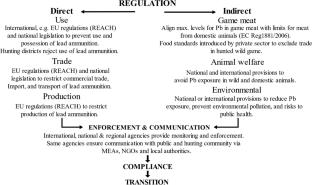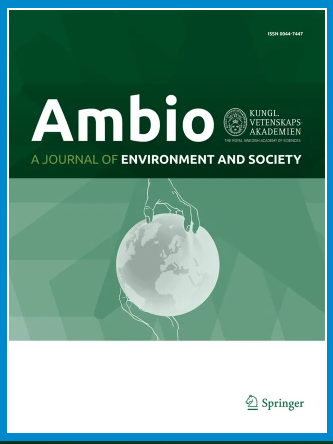Promoting enforcement of non-lead hunting ammunition regulations and compliance in Europe and North America
Abstract
The direct regulation of lead ammunition in North America and Europe has been mainly for hunting in wetlands. Little support among hunters and the ammunition makers exists for further regulation despite suitable lead substitutes and much education about the known risks to wildlife and human health from ingested lead. In the absence of personnel to detect use of lead ammunition and enforce regulations, hunter compliance is low. Identification of non-lead ammunition using existing electronic technology and an international protocol on the identification of non-lead rifle bullets is proposed to aid enforcement. An explicit definition of the chemical composition of lead substitutes is required in European Union legislation together with a more enforceable distinction between ‘possession during hunting’ and ‘ownership’ of lead ammunition. A more transdisciplinary regulatory approach to transitioning to non-lead ammunition is advised. It comprises widespread public health advisories, setting a maximum allowable lead level in commercial game meats in EU legislation, and public communication that emphasizes the benefits of non-lead ammunition use to all categories of wildlife and the public perception of hunting, whether in North America or Europe.


 求助内容:
求助内容: 应助结果提醒方式:
应助结果提醒方式:


